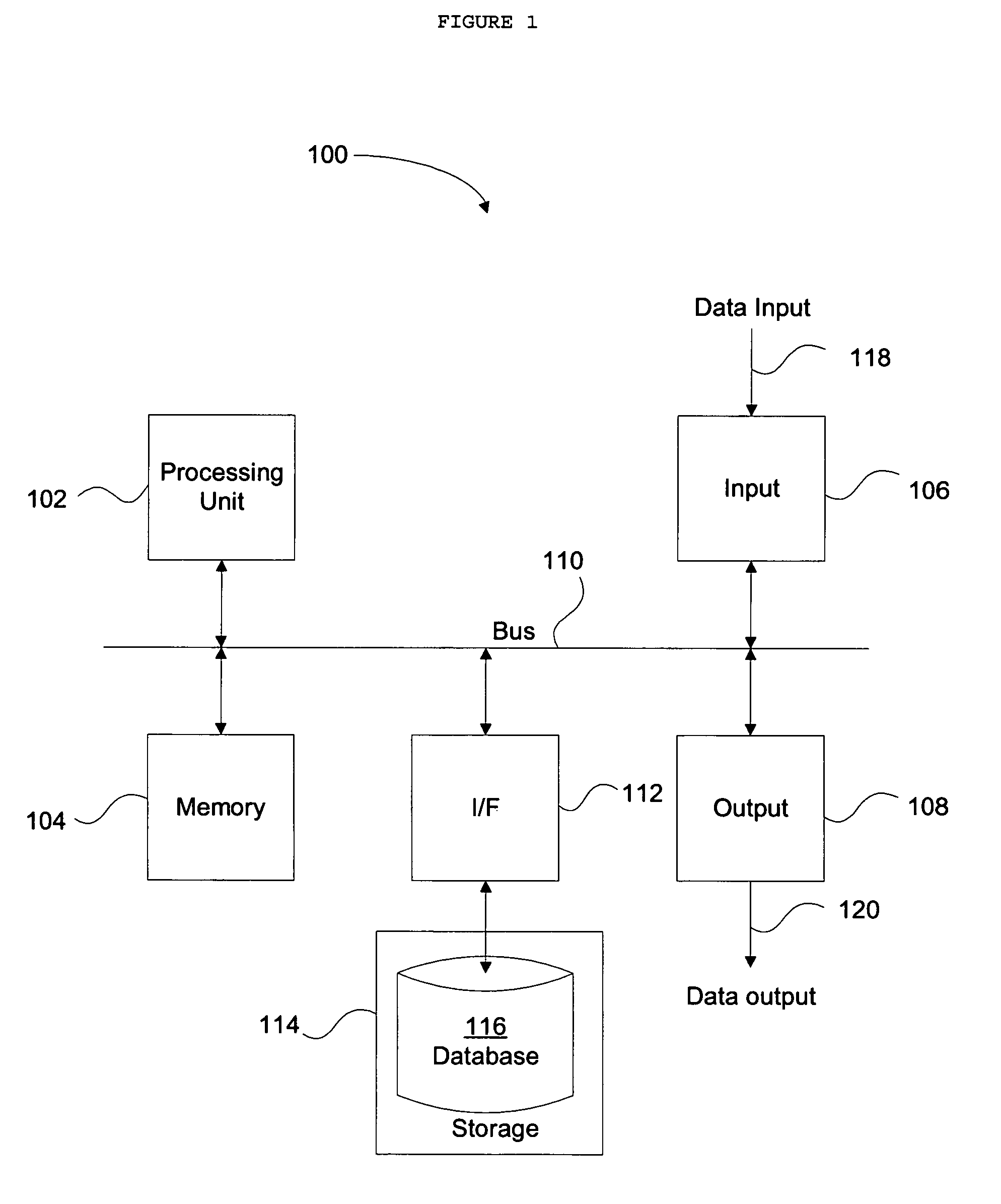Line extraction in digital ink
a digital ink and line extraction technology, applied in the field of handwritten digital ink documents, can solve the problems of inability to work well, low handwriting recognition accuracy, and difficult handwritten text search, and achieve the effect of not slowing down further ink processing and being computationally inexpensiv
- Summary
- Abstract
- Description
- Claims
- Application Information
AI Technical Summary
Benefits of technology
Problems solved by technology
Method used
Image
Examples
embodiment
Preferred Embodiment
[0087]A particular embodiment of the present invention can be realised using a processing system, an example of which is shown in FIG. 1. In particular, the processing system 100 generally includes at least a processor or processing unit 102, a memory 104, an input device 106 and an output device 108, coupled together via a bus or collection of buses 110. An interface 112 can also be provided for coupling the processing system 100 to a storage device 114 which houses a database 116. The memory 104 can be any form of memory device, for example, volatile or non-volatile memory, solid state storage devices, magnetic devices, etc. The input device 106 receives data input 118 and can include, for example, digital notepad etc. The output device 108 produces data output 120 and can include, for example, a display device, monitor, printer, network card, etc. The storage device 114 can be any form of storage means, for example, volatile or non-volatile memory, solid state...
experiment a
[0103]To test the performance of the method for line extraction, fourteen (14) people were asked to copy the contents of a selected text page in their own handwriting and without necessarily preserving the line breaks, text line orientations and relative positions of the example page. No extra care was required by the writers regarding the writing style, therefore the data presented a good mix of cursive and discrete writing as well as a mixture of fonts. The example page copied by the writers contained a printed passage written horizontally in the middle of the page, a list of sport names written anywhere on the page (in list format) in arbitrary orientation and a number of annotation words / sentences written around the central passage in arbitrary positions and orientations. The data consisted of 415 lines or 401 line breaks (excluding the beginning and end of page). The exact positions of the line breaks (the index of the temporally last stroke of each line) were manually identifi...
experiment b
[0104]The second experimental data set comprised 14 full pages of cursive text copied from a novel by a single writer. Again, line extraction was evaluated, the difference being that all lines were approximately horizontal (they were written using guide ruler lines). On average each page contained 28 lines which were often touching and their length sometimes changed markedly. In total, the data contained 406 lines or 392 line breaks which were manually ground truthed (exactly as in Experiment A). Examples of the handwritten pages are shown in FIG. 12.
PUM
 Login to View More
Login to View More Abstract
Description
Claims
Application Information
 Login to View More
Login to View More - R&D
- Intellectual Property
- Life Sciences
- Materials
- Tech Scout
- Unparalleled Data Quality
- Higher Quality Content
- 60% Fewer Hallucinations
Browse by: Latest US Patents, China's latest patents, Technical Efficacy Thesaurus, Application Domain, Technology Topic, Popular Technical Reports.
© 2025 PatSnap. All rights reserved.Legal|Privacy policy|Modern Slavery Act Transparency Statement|Sitemap|About US| Contact US: help@patsnap.com



